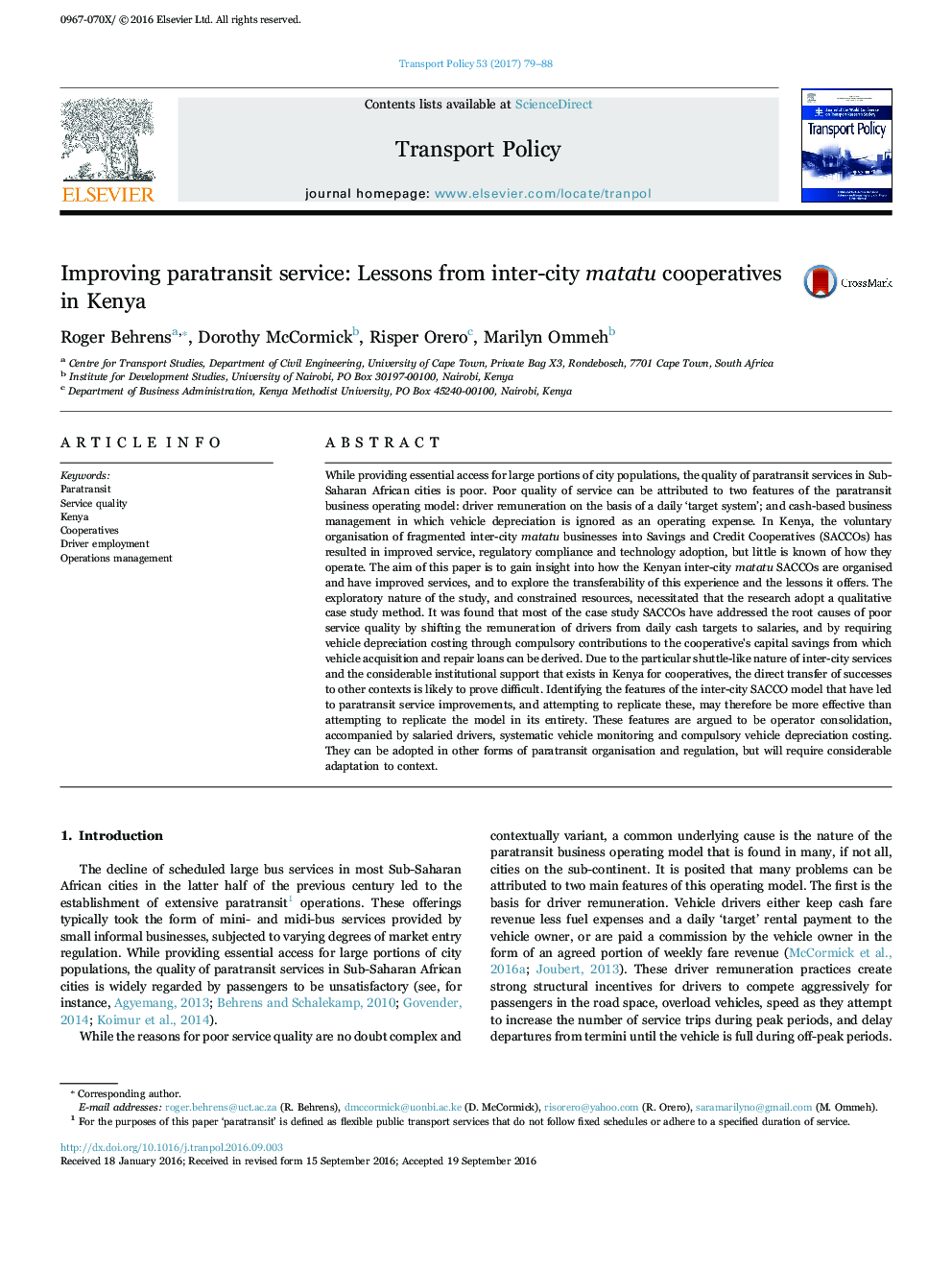| کد مقاله | کد نشریه | سال انتشار | مقاله انگلیسی | نسخه تمام متن |
|---|---|---|---|---|
| 7497334 | 1485824 | 2017 | 10 صفحه PDF | دانلود رایگان |
عنوان انگلیسی مقاله ISI
Improving paratransit service: Lessons from inter-city matatu cooperatives in Kenya
دانلود مقاله + سفارش ترجمه
دانلود مقاله ISI انگلیسی
رایگان برای ایرانیان
کلمات کلیدی
موضوعات مرتبط
علوم انسانی و اجتماعی
علوم اجتماعی
جغرافیا، برنامه ریزی و توسعه
پیش نمایش صفحه اول مقاله

چکیده انگلیسی
While providing essential access for large portions of city populations, the quality of paratransit services in Sub-Saharan African cities is poor. Poor quality of service can be attributed to two features of the paratransit business operating model: driver remuneration on the basis of a daily 'target system'; and cash-based business management in which vehicle depreciation is ignored as an operating expense. In Kenya, the voluntary organisation of fragmented inter-city matatu businesses into Savings and Credit Cooperatives (SACCOs) has resulted in improved service, regulatory compliance and technology adoption, but little is known of how they operate. The aim of this paper is to gain insight into how the Kenyan inter-city matatu SACCOs are organised and have improved services, and to explore the transferability of this experience and the lessons it offers. The exploratory nature of the study, and constrained resources, necessitated that the research adopt a qualitative case study method. It was found that most of the case study SACCOs have addressed the root causes of poor service quality by shifting the remuneration of drivers from daily cash targets to salaries, and by requiring vehicle depreciation costing through compulsory contributions to the cooperative's capital savings from which vehicle acquisition and repair loans can be derived. Due to the particular shuttle-like nature of inter-city services and the considerable institutional support that exists in Kenya for cooperatives, the direct transfer of successes to other contexts is likely to prove difficult. Identifying the features of the inter-city SACCO model that have led to paratransit service improvements, and attempting to replicate these, may therefore be more effective than attempting to replicate the model in its entirety. These features are argued to be operator consolidation, accompanied by salaried drivers, systematic vehicle monitoring and compulsory vehicle depreciation costing. They can be adopted in other forms of paratransit organisation and regulation, but will require considerable adaptation to context.
ناشر
Database: Elsevier - ScienceDirect (ساینس دایرکت)
Journal: Transport Policy - Volume 53, January 2017, Pages 79-88
Journal: Transport Policy - Volume 53, January 2017, Pages 79-88
نویسندگان
Roger Behrens, Dorothy McCormick, Risper Orero, Marilyn Ommeh,